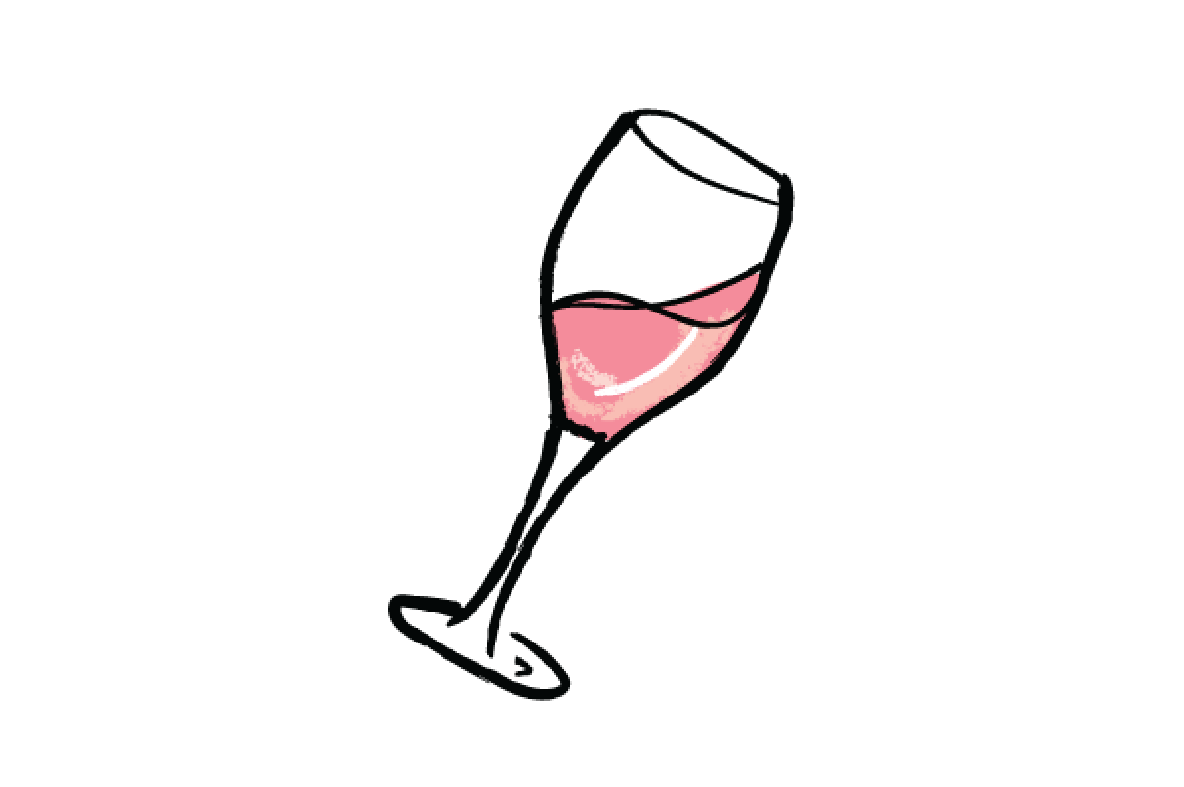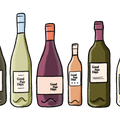

Rose is probably THE wine of the past couple of years, taking over parties and picnics like nothing else. Let's take a look at the different styles of rosé and just why it is so great!

Rose is probably THE wine of the past couple of years, taking over parties and picnics like nothing else. It's hard to believe that only 10 or so years ago, rosé was seen as a 'second-class wine citizen', made by using left-over red wine grapes and for a diminishing market. How things have changed. Let's take a look at the different styles of rosé and just why it is so great
Why is rosé wine pink?--red
Let’s clear up the most obvious question first. Rosé is not - as many people still seem to think - a blend of red and white wines. In fact, rosé wines are most commonly single varietal wines (that is, they are generally unblended), with the exception of some of the famous French rosé wines from Provence.
Many people are surprised to hear that rosé wines are generally made from exactly the same grapes as their favourite red wines. Look closely at the label of any decent bottle of pink vino, and you’ll most likely find that they’re produced from grapes like Grenache, Merlot, Cabernet Sauvignon, Sangiovese, Syrah. So why are they such a different colour, and have such radically different characteristics? The answer comes down to the winemaking techniques involved, and most importantly, how much time the grape juice has in contact with the grape skins.
Red wines get their colour, and much of their flavour, aroma, tannins, and ‘body’, from the skins of the grapes. When winemakers want to make a deeply coloured, full-bodied, and intensely flavoured red wine, they’ll leave the grape juices in contact with the pigment-rich skins for a long time. Rosé wines generally have a very brief sojourn meeting the grape skins, meaning just enough pigment is imparted to create a delicate pink blush (and just enough tannin and flavour is transmitted to give them their bright and fascinating profiles), but not so much than the wine turns red. This method of creating rosé wines (known in the business as the maceration method) is by far the most common and the most reliable for consistency.
Interestingly, there is another method of rosé production which is gaining in popularity, after centuries of being a rather obscure way of doing things. Known as saignee (after the French word for ‘bleeding’) it involves the winemaker ‘bleeding off’ some of the juice from a vat in the first few hours of red wine production. Because the wine has already started to take on the pigment of the grape skins, it will already have a pinkish hue. It will then be transferred into a new vat, where it can ferment and become a rosé wine.
Why are they so many shades of rosé?--aromatic
From the most delicate blush to more vivid orange-tinged pinks, and from those edging on scarlet to those with a greenish or straw-coloured tone, there are just as many different colours of rosé as there are of red or white wine.
The reason for this, of course, comes down to the grape variety used, and once again, how much time the grape juice has had in contact with the skins.
The French, being the French, have a wonderfully long list of colour variants for their rosé wine, which gives a nice indication of just how varied the rosés are which come from this most famous of wine producing nations. Because the winemaker has quite a lot of control over the colour of their rosé (as they can decide how long they want the juice to macerate with the skins), they can choose based on local tradition or personal preference which tones or hue to opt for. A few examples of 'rosé colours' is as follows :
- Onion skin
- Brick red
- Raspberry
- Flesh
- Peach
- Melon
- Apricot
- Mandarin
- Mango
- Rosewood
- Salmon
- Pink marble
- Coral
Impressive, huh? So next time you choose a bottle of ‘pink’ wine for your lunchtime tipple, you can confuse the hell out of your wine vendor by requesting a mango-hued bottle of southern Provence vin rosé. Or perhaps not.

Popular rosé wines, their colours, and their flavours--racy
Let’s run through some of the most popular and famous rosé wine styles from around the world, starting with the palest, and moving our way down to the most vividly coloured, and think about the grape varietals used and their usual characteristics. In doing so, we should be able to get a clearer notion of the range out there, and why this wine style is so impressively varied in colour, flavour, and other distinctive features.
Provence (region in the south of France): Pale, delicate, and an absolute staple of the rosé wine world, Provence rosé tends to be made primarily of Grenache, or also Mourvedre. These wines are usually very bright and dry, and feature delicious notes of grapefruit, watermelon, and chopped herbs.
Pinot Noir: A shade darker than Provence rosé, these wines are usually bright and acidic, but with a somewhat earthier note. Expect flavours of melon and strawberry, and fewer floral or herbal characteristics.
Tempranillo: The big-hitter from Spain has a true pink colour, and features the spiciness and earthiness we expect from this Spanish varietal.
White Zinfandel: Bright pink, and with a deliciously easy-drinking profile, White Zinfandel is a favourite among ladies’ lunches everywhere. Often a little on the sweeter side, it boasts flavours of tropical fruits (and pairs brilliantly with creamy pasta dishes).
Sangiovese: Everyone’s favourite sunny Italian varietal features another brilliant shade of pink, and packs in tart berry flavours and a fantastic balance of dryness and fruit-forward characteristics.
Cabernet Sauvignon: A bit darker than Sangiovese and Tempranillo, Cab Sauv rosé features a more complex flavour profile which ranges from tangy citrus notes to surprising touches of leather and tobacco.
Syrah / Shiraz: Darker red in colour, the tannic grapes of the Shiraz varietal mean this rosé has a more boisterous profile which really zings on the palate. Hearty, lush, and featuring flavours of plums and berries, these rosés pair brilliantly with sweet and savoury stews, like a Moroccan tagine.
Montepulciano: If you’re looking for a ruby red rosé with a proper medium body, then this Italian varietal is the one for you. Made in the Abruzzo region of Italy, these wines features mountains of mulling spices and notes of candied fruit.
Tavel (another region in the south of France): Probably the darkest rosé you’re likely to come across, Tavel wines are made in the Rhone Valley. Interestingly, they’re made from Grenache grapes - the same varietal used right at the other end of this scale - but because of longer maceration times, the skins impart a much deeper colour and flavour. The ultimate rosé wine for red wine lovers!
There you have it - the full rosé rainbow!
About the Author
Banjo Harris Plane is the three-time winner Sommelier of the Year Australia and a certified advanced Sommelier through the Court of Master Sommeliers. He first cut his teeth in the wine industry working as a sommelier in Australia's best restaurants, before starting multiple businesses in the space of a few years... these included two restaurants, a wine import business and co-founding Good Pair Days!
Do you know your wine personality? If your answer is no, take our quiz to find out which wines to pick up next and build your box!
Build my box





